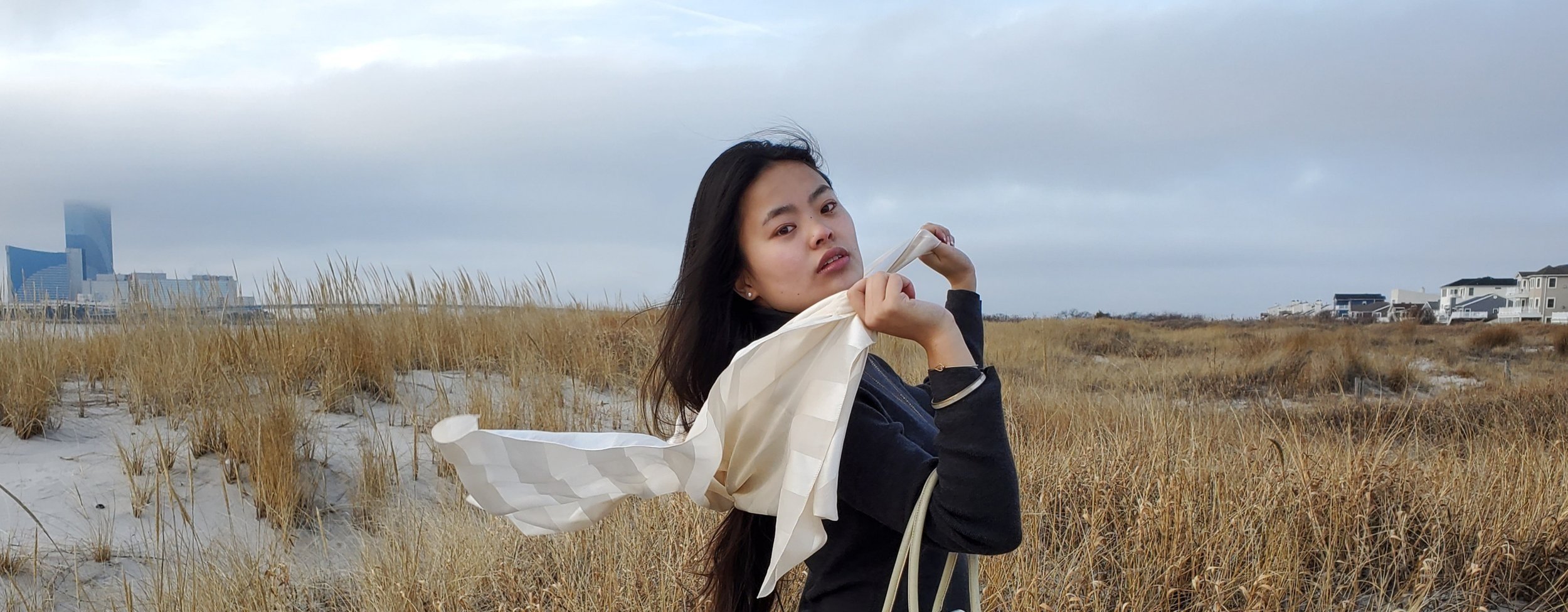Meet the Artist
Catherine Titterton
Artist’s Statment
Creation is a meditative process. I will set up my subject, then sit in a nest of reference images with an idea in mind, and spin something together for about 8 hours–shutting out the world almost entirely. I’d liken the process to ‘carving’ a subject out of a sheet of paper.
I feel it is important to understand, say: how glass cools into blobs; how wood splinters; how metal distorts reflections; how light reflects off the surface of skin–while also scattering beneath it, and so on and so forth. I have to understand a thing on a technical level before I can edit it down, simplify it, or recombine it in any way. As I work from observation, I will start to make notes on the key parts of what to preserve about the subject–creating a sort of visual shorthand for it.
Above all, I want my work to be technical, but approachable.
I draw inspiration from many kinds of art. I am particularly taken by the works of Eliza Ivanova and Edmund Dulac, as well as Xuanwei Su, Victo Ngai, Edna Cooke and Bertha Lum.
More Info
Artist’s Biography
Catherine’s first foray into art was something of an explosion: finger paint on the table (and walls), chalk in the carpet, colored pencil everywhere. There was a memorable and (notably) ill-fated attempt at cutting her own hair. Many, many demands were made of her long-suffering aunt, who very patiently encouraged Catherine’s desire for drawings of fish and cats.
Catherine’s foundational years—from four to twelve—were spent at George Kaiser’s School of Art, wherein there was a strict focus on observational work and technical drawing. She spent her early teens studying under Stacy Polidoro, where she was expected to explore different mediums and techniques.
Catherine credits her ongoing love of figure drawing and working with charcoal on toned paper to her high school teacher, Leonidas Moustakas.
Catherine attributes her strong grasp of anatomy and biological processes to her educational background in biomedical sciences. She began her university studies in Drexel University’s Biomedical Engineering program, before redirecting her sights towards Rowan university’s Biomedical Visualization program.
More on the process
Charcoal
When using charcoal, I find that drawing from life is very similar to sculpting. I start by laying down and then “pull” the form from that midtone. This allows for very dramatic contrast between light and dark, lending well to still life and observational portraiture.
Graphite
I take the opposite approach to graphite. Because graphite is less “chalky” than charcoal, it seems more prone to clumping--particularly in humid weather, or when using the hand to blend. As such, my graphite works have crisp linework, with very soft shading done with a blending stump–often depicting whimsical and exploratory subjects.
Digital Art
My digital art tends to be more bombastic: bright colors and odd compositions and highly varied subject matter. Because the barrier of entry is lower (the only thing that needs to be set up is a tablet, as opposed to a drop cloth/ palette/ sharpening/ easel/ cleanup/ space/ etc.), I can simply open up Photoshop or Krita and jump right in.
Further Considerations
Physical media requires significant upfront consideration and technical knowledge, and as such, my physical compositions are carefully considered and planned beforehand. Digital painting, on the other hand, allows for near-infinite iteration through the use of layering and undo buttons. This allows initial compositions to be “built on”--meaning that I can explore a single idea or artwork in infinitely branching ways–all without sacrificing the original concept art.
Programs and mediums
Adobe Creative Cloud
Camera Raw
Carbon Dust
Charcoal
Graphite
InDesign
Lightroom
Pastel
Pen & Ink
Photoshop
